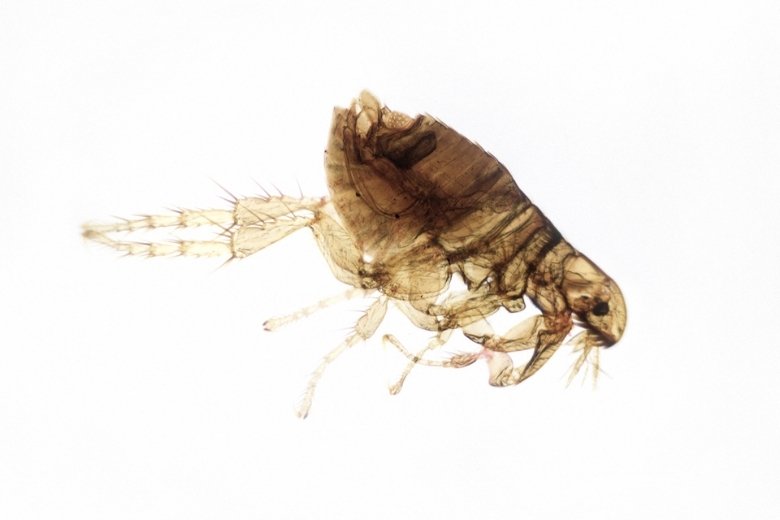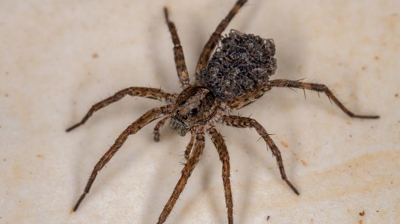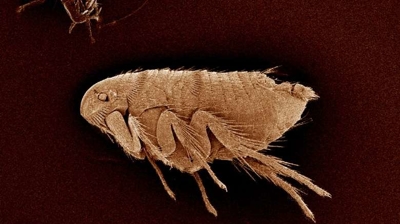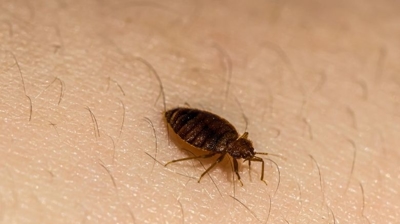
Are Fleas Harmful?
Fleas are generally considered a nuisance and can pose health risks to both animals and humans. While they are not typically dangerous in the sense of being life-threatening, they can cause various problems and discomfort. Here's an overview of the potential dangers associated with fleas:
- Itching and Allergic Reactions: Flea bites can cause itching, redness, and skin irritation in both pets and humans. Some individuals may be allergic to flea saliva, leading to more severe allergic reactions and skin problems.
- Secondary Infections: Excessive scratching of flea bites can lead to open sores, which can become infected with bacteria. This can result in secondary skin infections that require medical treatment.
- Anemia: In severe infestations, especially in young or small animals, fleas can feed on a significant amount of blood, potentially leading to anemia, a condition characterized by a shortage of red blood cells. Anemia can be particularly dangerous for pets.
- Vector of Diseases: Fleas can transmit various diseases, although this is relatively rare. Historically, fleas have been known to transmit diseases like typhus and bubonic plague. However, modern hygiene and medical advancements have significantly reduced the risk of such diseases.
- Stress and Discomfort: Constant itching and discomfort caused by fleas can lead to stress and behavioral changes in pets. They may become anxious, agitated, and lose their appetite.
- Flea Allergy Dermatitis (FAD): Some animals, particularly cats and dogs, can develop flea allergy dermatitis, an allergic reaction to flea saliva. This condition can cause intense itching, hair loss, and skin problems.
- Transmission of Tapeworms: Fleas can serve as intermediate hosts for tapeworms. Ingesting a flea during grooming can lead to a pet becoming infected with tapeworms.
- Public Health Concerns: Although uncommon, fleas can potentially transmit diseases to humans. While the risk is low, it's essential to control fleas, especially in households with pets.
Fleas are not typically dangerous in the way that some other pests or diseases are, but they can cause a range of health problems and discomfort for both pets and humans. Prompt and effective flea control measures are important to mitigate these risks, especially in homes with pets, to ensure the well-being of both your animals and your family.
Learn more: What Do Fleas Eat? || Do Fleas Bite Humans? || What Do Fleas Look Like?
Flea Removal
Fleas are more than a nuisance—they’re a genuine threat to both people and animals, and that’s what makes eliminating them so important. They feed exclusively on blood, which means every stage of their life cycle revolves around finding and exploiting a host. That constant biting can lead to significant discomfort, allergic reactions, and secondary skin infections in pets and humans. Beyond the irritation, fleas are capable of transmitting pathogens and parasites, including tapeworms and bacteria like Bartonella (the cause of cat scratch disease). Their ability to reproduce at extreme speed—laying dozens of eggs per day that fall into carpets, bedding, and cracks—allows them to build massive populations before you even realize they’re present.
Because their eggs, larvae, and pupae are tucked away in hidden areas of a home or yard, infestations don’t resolve on their own. Left untreated, they can persist for months and spread rapidly between pets, wildlife, and neighboring properties. Their resilience, mobility, and reproduction rate make them one of the most disruptive and entrenched household pests. Eliminating them isn’t just about comfort; it’s a health and safety measure that prevents escalating infestations, protects animals from chronic irritation and disease, and reduces health risks for people who share the environment.
Learn more: How To Get Rid Of Fleas
Flea Control
Hiring our professional flea control is one of the most effective steps you can take when dealing with these persistent pests. While DIY treatments and over-the-counter products may seem like quick fixes, fleas are notoriously resilient and require a strategic, thorough approach to eliminate fully. Here are some of the reasons why professional flea control is the smarter choice:
- Complete Elimination of Fleas and Their Life Cycle: Fleas reproduce rapidly, and their eggs, larvae, and pupae often hide deep in carpets, furniture, cracks, and pet bedding. Store-bought sprays or powders rarely reach all these areas, which means infestations can quickly return. Our professionals use targeted treatments that break the flea life cycle at every stage, ensuring long-term relief rather than temporary suppression.
- Protection for People and Pets: Fleas aren’t just annoying — they bite, cause skin irritation, and can transmit diseases and tapeworms to both pets and humans. Our professional treatments protect your family and pets from these health risks by eliminating active infestations and preventing re-infestations.
- Advanced Products and Techniques: Our exterminators have access to stronger, more effective products than what is available in stores. Our treatments are designed to penetrate the places fleas hide and deliver long-lasting protection, while being applied in a safe and controlled manner that minimizes risks to your household.
- Thorough Inspection and Customized Solutions: Our professionals don’t just spray and leave. We conduct a careful inspection to determine the extent of the infestation, identify hot spots, and tailor a treatment plan to your home’s specific needs. This precision ensures nothing is overlooked — a major advantage over DIY efforts.
- Saves Time, Stress, and Money: Fleas can quickly take over a home, and repeated failed attempts at DIY control waste both money and effort. Our professional flea control gets it right the first time, helping you regain comfort and peace of mind sooner without the frustration of trial and error.
- Long-Term Prevention: In addition to treating the current problem, our pest control experts provide guidance and follow-up services to help prevent fleas from returning. This may include recommendations for pet care, home maintenance, and additional preventive treatments.
Our professional flea control provides the expertise, precision, and lasting results that DIY methods cannot match. If you want to protect your family, pets, and home from these relentless pests, investing in professional help is the most reliable solution.
Flea Exterminators
Choosing our local exterminator for a flea problem delivers stronger results and a smoother overall experience than relying on a national chain. Our local professionals work directly within your climate, your neighborhood’s pest pressures, and with the types of pets and wildlife common in the area, which means we build treatment plans around the conditions we see every day—not generic protocols written for the whole country. Our reputation depends on how well we perform for our community so we provide more attentive service, faster response times, and follow-through that isn’t limited by corporate call centers or rigid scheduling systems. You also benefit from direct access to the same technician throughout the process, which ensures consistent monitoring of the infestation, better communication, and more accurate adjustments as the treatment progresses. Flea elimination requires precise timing, persistent application, and an understanding of how the infestation behaves within a specific home and environment; our local specialists are positioned to provide that level of tailored strategy. Beyond the technical advantages, working with our local team keeps your money in the community and supports a business that has a vested interest in long-term relationships.
Flea Solutions
Our exterminators use Integrated Pest Management (IPM) to control fleas because these parasites reproduce rapidly, infest pets and homes, and can transmit diseases, making targeted, long-term control essential. IPM begins with a thorough inspection to identify the extent of the infestation, including pets, bedding, carpets, furniture, and outdoor areas such as yards or kennels. Management strategies focus on habitat modification, including regular vacuuming, laundering bedding, treating pets with veterinarian-approved products, and eliminating moisture and organic debris that support flea development. Targeted interventions, such as insect growth regulators (IGRs), topical or environmental insecticides, and spot treatments, are applied strategically to minimize chemical exposure while breaking the flea life cycle. Ongoing monitoring allows our exterminators to track activity, evaluate treatment effectiveness, and adjust strategies to prevent reinfestation. By integrating inspection, environmental management, targeted treatment, and monitoring, IPM provides a long-term, precise, and environmentally responsible approach to managing flea populations.
Where Are Fleas Found?
Fleas can be found in various environments, primarily where their hosts, such as mammals (especially rodents, as well as pets and wildlife) and birds, reside. Here are some common places where you might encounter fleas:
- On Pets: One of the most common places to find fleas is on dogs, cats, and other pets. Fleas infest the fur of these animals, where they feed on their blood.
- In Homes: Fleas can infest homes, particularly in areas where pets spend a lot of time. They lay eggs in carpets, bedding, furniture, and cracks in floors. Larvae develop in these environments, and adults emerge from pupae.
- In Yards: Fleas can exist in outdoor environments, particularly in areas where pets play or rest. Yards and outdoor living spaces can harbor fleas, and they can jump onto pets or humans when outdoors.
- Wildlife Habitats: Fleas can also be found in the nests, fur, or feathers of wildlife, including rodents, birds, and other animals. Encounters with fleas can occur when people come into contact with these animals.
- Vacant Buildings: Abandoned or vacant buildings can become ideal habitats for fleas as they offer shelter and can attract wildlife that serves as hosts.
- Public Spaces: Fleas are less commonly found in public places, but in rare cases, they may infest seating areas or public transportation if pets or infested individuals frequent those places.
- Areas with Infestations: If you visit a location that has a known flea infestation, you might encounter fleas in the environment or on individuals or animals in that area.
- Warm Climates: Fleas tend to be more prevalent in warm and humid climates, as these conditions are favorable for their development and reproduction.
Be vigilant if you have pets, as they are a common source of flea infestations in homes. Regular grooming, use of flea prevention products, and keeping your home clean can help reduce the risk of fleas. If you suspect a flea infestation in your home or on your pets, it's advisable to take prompt action to control and eliminate the infestation, as fleas can be a nuisance and carry diseases that can affect both pets and humans.
Learn more: Can Fleas Live On Humans? || Can Fleas Fly? || What Do Flea Droppings Look Like?
Flea Life Cycle
The life cycle of fleas consists of four main stages: egg, larva, pupa, and adult. Each stage has distinct characteristics, and understanding this life cycle is crucial for effective flea control. Here's the flea life cycle:
- Egg Stage: Flea eggs are small, oval-shaped, and typically white or off-white in color. Female fleas lay eggs on their host (e.g., a pet) but the eggs often fall off into the environment, such as carpets, bedding, and cracks in floors. Flea eggs are not sticky and easily dislodge from the host. Eggs hatch in as little as 1-12 days, depending on environmental conditions like temperature and humidity.
- Larva Stage: Flea larvae are worm-like, legless, and semi-transparent with a white or cream color. They are photophobic (avoid light) and tend to hide in dark, sheltered areas like carpets, bedding, and cracks in the floor. Flea larvae primarily feed on organic debris, such as skin flakes and dried blood left behind by adult fleas. The larval stage can last from about 5 days to several weeks, depending on environmental factors.
- Pupa Stage: Flea larvae eventually spin silk-like cocoons around themselves, which are often covered with debris from the environment, making them camouflaged and protective. Inside the cocoon, the larva undergoes metamorphosis and transforms into an adult flea. The pupa stage can last from a few days to several months, with the adult flea emerging when conditions are suitable.
- Adult Stage: Adult fleas are the final stage of the life cycle. They emerge from the pupal cocoon when stimulated by vibrations, heat, or the presence of a potential host (e.g., a passing animal or human). Adult fleas seek a blood meal from their host to sustain themselves and reproduce. The entire life cycle from egg to adult can take as little as a few weeks under ideal conditions, but it may be extended if environmental factors are less favorable.
Fleas can reproduce rapidly, with a single female flea capable of laying hundreds of eggs during her lifespan. Effective flea control involves targeting all stages of the life cycle, as simply addressing adult fleas may not fully eliminate an infestation. This may include treatments such as vacuuming, cleaning, using insecticides, and administering flea prevention products to pets. Regular maintenance and prevention are key to keeping flea populations in check.
Learn more: What Do Flea Eggs Look Like?

Hear From Our Happy Customers
-
"Fantastic & Patient"
Jarvis was fantastic and patient. He answered my questions with an in-depth explanation and addressed all of my areas of concern. Would love for him to be my assigned tech going forward. Well done!
- Yonnette M. -
"Wonderful Service"
Wonderful service. Jarvis is great. Took care of everything I needed. Thank you!
- Henry P. -
"Very Knowledgeable"
The tech that arrived was courteous, professional, and very knowledgeable. He was Great.
- Uerial I. -
"Professional & Considerate"
I’m pleased with Miche services. Jarvis came today. Professional and considerate. Thank you!
- Judy B. -
"Exceeds Expectations"
I can’t say enough positive things about this company... The tech that came out, Jarvis went above and beyond my expectations. Thank you guys, I will continue using your services.
- Jake M. -
"Great Communication"
Tech was on time, communication was great, and he accommodated my needs.
- Alonzo W.




